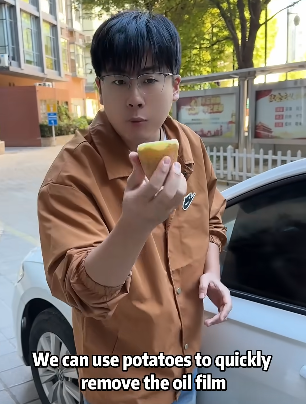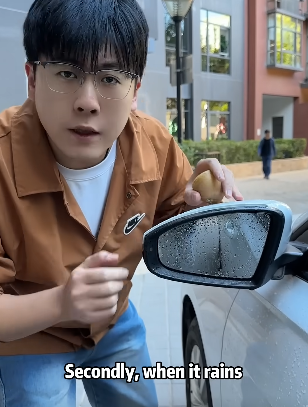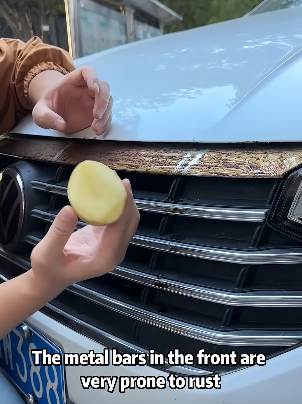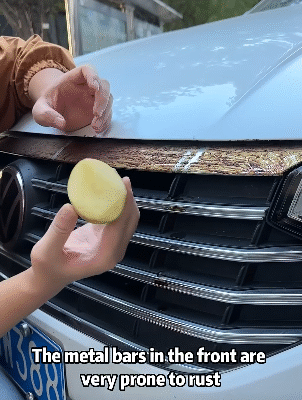
When you think about cars, you probably imagine engines, tires, shiny metal, and high-tech gadgets. Potatoes are more likely to remind you of comfort food, like French fries or mashed potatoes, rather than vehicles. However, in recent years, the humble potato has found surprising uses in the automotive world. From sustainable materials to clever experiments, potatoes have shown that they have more to offer than just being a tasty side dish. This essay explores the various ways potatoes are used—or could be used—in cars.

1. Potatoes as a Source of Bioplastics
One of the most exciting developments in the automotive industry is the use of bioplastics made from potatoes. Traditional plastics are made from petroleum, a nonrenewable resource that contributes to environmental pollution. Bioplastics, on the other hand, are derived from natural materials like starches found in potatoes.
Companies have developed ways to extract starch from potatoes to create plastic-like materials that are biodegradable. These bioplastics can be used in car interiors, such as dashboards, door panels, and trims. Not only do they reduce the environmental impact, but they also lower the overall weight of the car, leading to better fuel efficiency. Some experimental vehicles have even incorporated potato-based plastics into their seats and seatbacks.

2. Eco-Friendly Fuel Alternatives
Potatoes have also been explored as a source for biofuels. Potato waste, such as peels and scraps, can be fermented to produce ethanol, a type of alcohol that can be used as fuel. Some cars, especially those with flexible fuel systems, can run partially or fully on ethanol-based fuels.
Although corn is the most common crop used for ethanol production, research has shown that potatoes can also be a viable option, especially in regions where they are abundantly grown. Using potato waste for fuel helps in reducing agricultural waste and can support local economies. It’s still an emerging field, but the possibilities are promising.

3. Potato Batteries for Low-Power Electronics
It may sound like a science fair project, but potato batteries have practical applications too. A potato can generate electricity when two different metals (like copper and zinc) are inserted into it. The acidic juices inside the potato enable a chemical reaction that produces a small amount of electricity.
While a single potato battery is not strong enough to power a car, researchers have suggested that potato-powered batteries could run small, low-power electronics within a vehicle, such as sensors, clocks, or emergency lighting. In remote or emergency situations where no other source of power is available, potato batteries could be a cheap and renewable solution.
4. Polishing Car Surfaces
Beyond high-tech uses, potatoes have a simple, old-fashioned application for car owners: cleaning and polishing. The starches and natural sugars in a raw potato can help clean foggy headlights and remove minor smudges from car windows and mirrors.
By cutting a potato in half and rubbing it over the affected surface, drivers can achieve a cleaner, shinier finish. The natural chemicals inside the potato help to lift grime and provide a thin protective layer that can prevent future buildup. It’s a quick, eco-friendly trick that requires no special products.

5. Anti-Fogging Agent for Windshields
Another surprising use of potatoes is preventing fog buildup on car windshields. By rubbing a raw potato slice across the inside of the windshield, you leave behind a thin, invisible layer of starch that resists moisture condensation. This DIY solution can keep your windshield clear during cold or humid weather, improving visibility and driving safety.
This trick is especially popular among drivers in colder climates where morning frost or fog is common. It’s a simple, inexpensive method that uses a natural product instead of chemical sprays.
6. Insulation Material in Car Parts
Researchers are exploring ways to use potato starch as part of thermal insulation materials for cars. Good insulation keeps the interior temperature comfortable without putting extra strain on heating or air conditioning systems. Insulation made from renewable sources like potatoes would help manufacturers reduce their environmental footprint.
Although not yet common in mass-market vehicles, experiments have shown that potato-based insulation could be effective, lightweight, and fully biodegradable. As the industry moves towards greener production methods, innovations like this may become mainstream.
7. Educational Demonstrations and Science
Potatoes have also found a place in educational programs related to cars and engineering. In science workshops and classrooms, potato-powered vehicles—tiny cars powered by potato batteries—are used to teach students about alternative energy, chemical reactions, and sustainable technology.
These fun, hands-on projects inspire the next generation of engineers and scientists to think creatively about energy sources. It shows that even the most ordinary objects, like a potato, can be part of innovative transportation solutions.

8. Experimental Car Coatings
Some innovators are experimenting with using potato-based enzymes in coatings for car surfaces. These coatings can have properties like water repellency, self-cleaning, or even scratch resistance. While still in early stages of development, enzyme-based coatings could offer a plant-based alternative to chemical-intensive treatments.
Imagine a car surface that stays clean longer, uses fewer harsh chemicals for maintenance, and is biodegradable at the end of its life—thanks to the enzymes originally derived from a potato.
Conclusion: Small Potato, Big Impact
Although it might sound unlikely at first, potatoes have found a surprising number of uses in the automotive world. Whether it’s creating environmentally friendly bioplastics, serving as a biofuel source, providing emergency power, polishing headlights, or even preventing fog on windows, the humble potato is proving its versatility.
As sustainability becomes a bigger priority for car manufacturers and consumers alike, alternative materials and eco-friendly solutions are in high demand. Potatoes, with their natural abundance, renewability, and useful chemical properties, could play a key role in the greener cars of tomorrow.
Who would have thought that the same vegetable that makes great fries could also help drive innovation in the auto industry? The future of cars might just have a little potato power under the hood—or at least in the dashboard!



